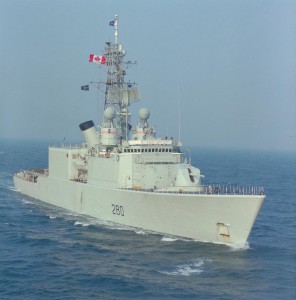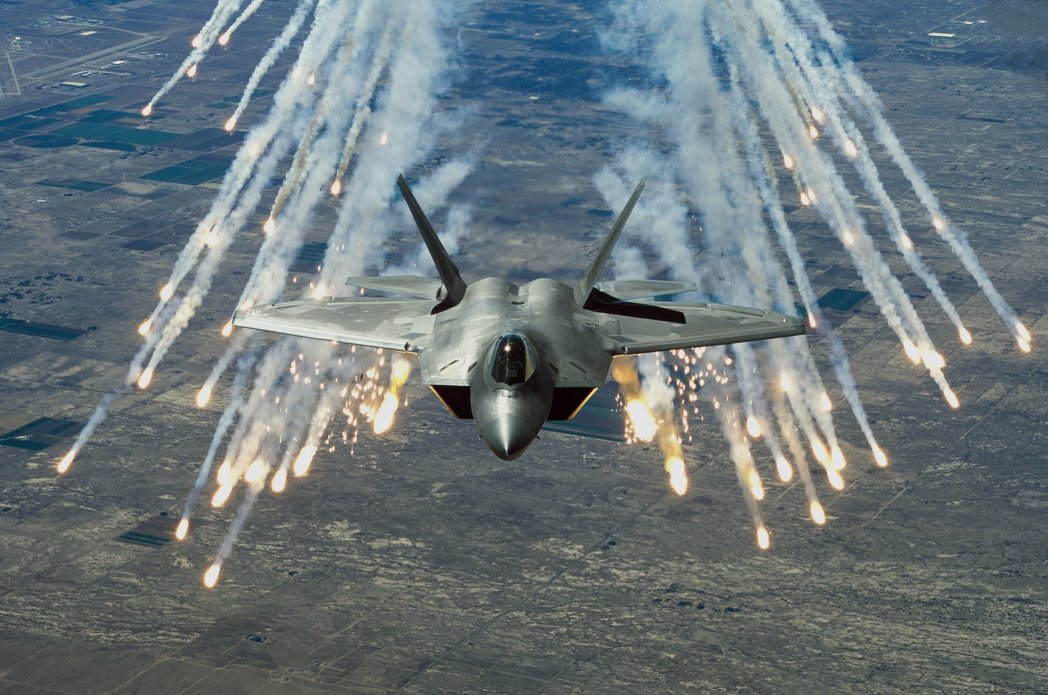By James M. Bridger.
As a nation surrounded by three great oceans, Canada’s maritime security has been of preeminent importance throughout the country’s history. Once boasting the world’s third largest navy, Canadian forces were instrumental in the Allied victory during the Battle of the Atlantic and have since played a significant global role in maritime operations from the Arctic Sea to the shores of Somalia. However, there has been recent concern that the nation has slipped into a state of “maritime blindness,” characterized by a general lack of awareness concerning issues of national and global oceanic security. Several recent events should serve to shake off this slumber.
The rapid melting of polar ice has heated up international disputes over maritime boundaries and the territorial status of the North West Passage. The Deepwater Horizon oil spill in the Gulf of Mexico provides an alarming reminder of the ecological risks that will accompany increased resource extraction in the pristine Arctic environment. On the Pacific Coast, the illegal arrival of 492 Tamil refugees aboard the MV Sun Sea demonstrates Canada’s vulnerable position as a prime target for human smugglers. In the Indian Ocean, the inability of international efforts to suppress Somali piracy exposes contemporary weakness to an ancient crime. Recognizing these and other challenges, the NATO Council of Canada seeks to contribute to the Canadian and international dialogue through an invigorated focus on maritime security issues. As an introduction to this project, an overview is provided of some of the major challenges Canada faces in both territorial waters and far off seas.
Arctic Sovereignty and Security
The contested future of the Arctic is one of the first geostrategic issues to arise from effects of climate change. While the full potential of the Arctic is not entirely understood, it is speculated the region contains vast mineral and petroleum resources. One estimate contends that 25% of the world’s undiscovered oil and gas deposits are located in the frozen North. Of central importance to the international debate are the benefits to global trade that would arise from an ice-free North West Passage. If predictions that the Canadian Arctic will be ice-free for most of its summer by 2015 prove accurate, shipping times from East Asia to Europe could be dramatically reduced.
The dramatically changing Artic environment has given a new sense of urgency to the resolution of territorial disputes. Canada’s only land dispute concerns uninhabited Hans Island, whose ownership is contested by Denmark through Greenland. Maritime boundaries are disputed with the U.S over the Beaufort Sea and with Denmark over the Lincoln Sea. There are also competing claims to seabed rights that extend from Canadian, American, Russian, and Danish continental shelves. Arguably the most pressing issue of Arctic sovereignty concerns the status of the North West Passage. The Canadian position is that the sea route is an internal waterway, giving the government the power to bar entrance to the passage, while other maritime powers argue that the waterway is an international strait for which rights of free passage should apply.
In dealing with these disputes, the Canadian Government has pursued diplomatic negotiations while also seeking to establish a more effective presence in the region. International cooperation has largely been positive. Ottawa was instrumental in establishing the Arctic Council in 1996 to act as a forum for Arctic nations to address issues of common interest: such as climate change, the protection of indigenous populations, oil and gas development, and scientific exploration. A collaborative effort to establish the extent of continental shelf claims will be submitted to a UN commission by 2013. While there has been much diplomatic progress, a glaring problem remains—the lack of an international forum to discus Arctic security concerns. Peace and security issues were left out of the Arctic Council’s mandate at U.S insistence, but it is possible that Canada could reintroduce this to the agenda when it takes over the Council’s chairmanship in 2013.
On the domestic front, Canadian strategy—popularized by the slogan “use it or loose it”—has been to increase governmental and military presence, develop Arctic communities, and establish environmental guidelines. From a security perspective this has entailed the creation of an army-training center in Resolute Bay, the expansion and modernization of the Canadian Rangers, and the procurement of larger icebreakers and other patrols ships and aircraft. Northern development has also been linked to sovereignty assertion. Michael Byers, a UBC professor and Arctic expert, contends the best way to ensure Canadian sovereignty over the North West Passage is to develop the infrastructure and services that foreign shippers will come to depend on.
Environmental Protection
Of particular importance is the establishment of mechanisms to protect the sensitive Arctic environment. Ecological risks stemming from oil spills, ship collisions, and ice trappings will become more pressing issues as mining, petroleum exploration, and transit expand. Preparations are being taken, an amendment to the UN Convention on the Law of the Sea has increased Canada’s pollution prevention jurisdiction by over half a million square kilometers in the Arctic Sea. New regulations under the Canadian Shipping Act require all vessels entering Canadian Arctic waters to report in to the Coast Guard. While preliminary protective measures are in place, there remain areas where further improvement is needed. While Canada has set strict national standards for the shipping of oil, international guidelines, established by the International Maritime Organization, remain only voluntary. The Artic is not the only region where increased extraction will require new precautionary measures. Atlantic Canada will face a similar challenge as Newfoundland’s offshore oil reserves are further developed.
Illicit Trafficking
Moving to the Atlantic and Pacific coasts, the primary concern for Canadian security is smuggling—be it of drugs, weapons, or human beings. While international trade is the lifeblood of the Canadian economy, the annual arrival of 460 million tons of cargo originating from over 160 states also makes the country a prime target for criminal traffickers. The complexity of this web often means that programs designed to curb illicit activity in one sector may only serve to relocate it elsewhere. For example, a domestic crackdown on the sale of chemicals and pharmaceutical drugs used as precursors in the manufacturing of MDMA (Ecstasy) and Methamphetamines has meant that these precursors are now smuggled to Canada in bulk, primarily from China and India. This has allowed transnational syndicates to establish high-end drug production facilities in Canada. In terms of firearms trafficked into the country, the majority arrive overland from the U.S. However, the RCMP notes that maritime ports have increasingly been used as a points of entry, largely for American weapons, but also in smaller quantities from Europe and East Asia.
Human Smuggling
Popular attention was focused on Canada’s role as a target for human smugglers when, in the span of twelve months, two ships—the MV Sun Sea and MV Ocean Lady—were able to reach the West Coast and illegally unload over 500 refugee claimants. While Canada prides itself on the acceptance of vulnerable refugees, human smuggling is a dangerous and exploitative enterprise. Mass, and often secretive, arrivals make it difficult for authorities to properly investigate and vet new immigrants. The RCMP estimates that human smuggling syndicates rake in $10 billion in annual profits. The money required to reach Canada, roughly $20,000-60,000, is extorted from immigrants and their families, often in a violent manner. Public Safety Minister Vic Toews notes that criminal smuggling networks are now broadening their operations with new bases and points of departure and arrival.
Combating human smuggling is a sensitive endeavor, as policies need to be developed that punish traffickers without turning away legitimate refugees. Less controversial than a reform of refugee laws is an enhanced Canadian capacity to monitor smuggling networks and disrupt their operations. This strategy calls for an increased Canadian presence overseas through improved bilateral and multilateral operations. This policy of “pushing borders out” has seen Canadian police and intelligence services form partnerships with their affiliates in Australia and South East Asia. There has been particularly close collaboration with officials in Thailand, as the country is a major transit point for smuggling activities
Somali Piracy
Melting Arctic passages, oil spills, and criminal trafficking networks are modern challenges that have accompanied industrial development and globalization. However, the twenty-first century has also seen the resurgence of the world’s oldest maritime security dilemma. Asked five years ago about the threat posed by piracy, many Canadians would have laughed it off as a hazard banished to the dustbin of history. Yet in 2010, pirates emanating from one of the world’s poorest countries captured over 1000 hostages and cost the global economy an estimated $7-12 billion. Canada, as part of NATO’s Operation Ocean Shield, is one of over thirty states that have contributed to international counter-piracy operations. While these efforts have reduced the number of attacks occurring in the Gulf of Aden, the Somali pirate gangs have extended their geographical range in all directions. Jack Lang, a counter-piracy advisor to the UN, warns that the pirates are becoming “the masters” of the Indian Ocean.
Suppressing the piracy epidemic has proven to be a daunting task for the international community. While naval patrols have saved many ships, they do not address the root cause of the problem and are ultimately unsustainable at the cost of $2 billion a year. The majority of captured pirates are soon released as Western governments have little appetite for bringing them home to stand trial and the justice systems of local partners, such as Kenya, have already become overburdened with suspected pirates. The realization that “the solution lies ashore” is a common refrain in policy circles, but numerous attempts to reconstitute a Somali state have born little fruit over the last two decades. In the mean time, mariners must brace themselves for an intensified round of attacks as the monsoon season—a natural bulwark against piracy—comes to an end in early spring.
Looking Forward
Despite the country’s three bordering oceans, Chief of Maritime Staff Dean McFadden notes that, from a demographic perspective, Canada has a “continental mindset.” With the majority of the population living in a landlocked corridor, issues such as the legal status of Arctic waterways, the destination of rusted ships departing South East Asia, or the profits of Somali pirates are not readily understood as challenges to Canadian security or economic wellbeing. However, the forces of globalization have made these and other dilemmas a cause of concern for all Canadians.
On an optimistic note, in these crises lies opportunity. Disputes over maritime boundaries has meant that the international laws and regimes governing the ocean environment have developed more in the last thirty years than in the previous 300. Counter-piracy operations have brought countries with diverse and conflicting interests together in pursuit of a common objective. While the trials and tribulations of specific maritime security challenges will be developed in depth in future articles, common to them all is the need to develop collaborative enterprises—between both Canadian departments and international allies. There are several successful examples to follow. In the wake of 9/11, the Interdepartmental Marine Security Working Group brought together representatives from Transport Canada, the Department of National Defense, Canada Border Service Agency, CSIS, the RCMP, and others to facilitate an all encompassing review of the country’s maritime security. On the international front, in 2009 the U.K established Mercury, a secure internet-based communications system that allows ships engaged in counter-piracy patrols to request information or assistance from other national navies—regardless of the state of relations between the two countries. It is through these sorts of exercises that a more secure maritime environment can be established, in both Canadian waters and across the globe.
*Disclaimer: The opinions expressed in this article are solely the author’s, and do not represent those of The NATO Council of Canada.




